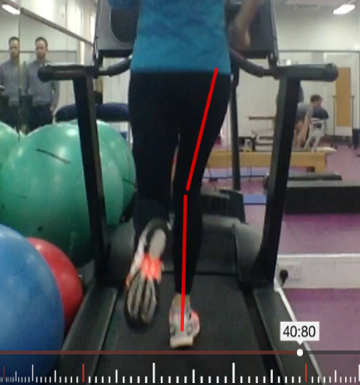Achilles Tendinopathy in runners
Achilles Tendinopathy is 1 of the top 5 running related injuries, accounting for up to 10% in all. With 65-80% of runners getting injured each year that’s a big number.
It’s an ever increasing problem that many runners now know too well. Achilles Tendinopathy is part of our running injuries season where we are focusing on the top 5 running injuries in detail. Giving you regular info on what it is, why runners get it, the current gold standard treatment and top tips on the best exercises.
What Is The Achilles Tendon?

The Achilles is one of the thickest tendons in your body. It connects the superficial calf muscles (mainly your big Gastrocnemius and Soleus muscles) to the heel bone (calcaneus). This allows you to walk, run and jump – essentially acting like a big spring.
Research shows that the Achilles Tendon and deep calf muscles can absorb up to 8 times your own body weight in force during running. This makes it exceptionally resilient and strong, unlike its Greek-derived name would suggest.
What Is Achilles Tendinopathy?
As used in many medical terms, ‘itis‘ is latin for inflammation. So Achilles Tendinitis basically means inflammation of the tendon. Commonly there are 2 points on the Achilles tendon that are prone to becoming sore. Classically the mid-tendon (approx 4cm up from the insertion in the heel bone), and also the point of insertion itself, which can be more irritable and therefore take longer to heal. Both occur due to overuse.

What’s going on?
In recent years we now refer to this as Achilles Tendinopathy. ‘Opathy’ being latin for ‘disorder of’, which describes the chronic nature of the condition more correctly as commonly people will suffer for months if not treated. Tendons (and in general all soft tissue) are in a constant continuum of healing. When a tendon becomes painful in the first 3-6 weeks, be it a first time episode or a flare up of a persistent problem, we class this as the ‘reactive phase’. Typically when symptoms are more acute and irritable. For example when walking with every step or going up and down stairs.
Over time the inflammation becomes more degenerative in nature due to a build up of scar tissue. This is termed as a ‘disrepair’ of the natural healing process. Achilles Tendinopathy symptoms in this phase include pain that is worse on the first few steps in the morning or after a prolonged period of rest such as sitting. This can usually improve as you get more mobile but increase again when standing or walking for prolonged periods, or when attempting to run again.
1 simple way to establish what stage of healing the Achilles tendon is in and provide diagnosis confirmation is using Ultrasound Scans. Take a look here for more information on our specialist service for Ultrasound Diagnosis.
Achilles Tendinopathy | Common Causes
As we mentioned in our previous Runner’s Hub blogs there are 3 key elements that make up an efficient, injury free runner:
Commonly if there is a fault in just 1 element this can increase the risk of Achilles Tendinopathy symptoms due to overuse. Our Run Lab assessment is suitable for runners of any level and aims to spot these faults before they even become a problem. A few common technique and control faults are shown below:




The most common cause of Achilles Tendinitis includes over training or simply doing too much, too soon. Look out for our upcoming blogs where we will be giving you some simple, golden tips on how to tailor your training to help prevent Achilles Tendinitis.
Finally, a very well referenced cause for Achilles Tendinitis symptoms is poor footwear. Its vital that your trainer fits to you, not you fitting to the trainer! We recommend our local partners at Up & Running, Sheffield.
Our next blog looks at What Is The Best Achilles Tendinopathy Treatment?
For more useful information and tips on everything running related go to our Runners Hub section of the website.
Remember…










